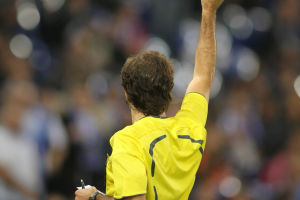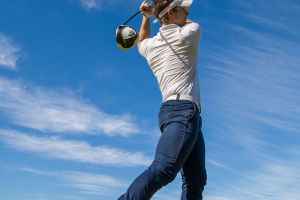We've all seen that cool moment when a player passes the ball without even glancing in the direction it goes.
That's the magic of the "no-look" move. In football (soccer), this trick involves passing, shooting, or dribbling while looking away—often fooling the opponent into thinking the ball is going somewhere else.
It might look casual, but it actually takes strong game sense, body control, and lots of practice.
Why It Works on the Field
We humans naturally follow others' eyes. So, when a player stares in one direction but moves the ball in another, defenders get confused or take a step in the wrong direction. This brief hesitation can give us just enough space to pass, shoot, or escape pressure. It's not just for flair—it's a real tool, especially in tight spaces.
How to Practice the "No-Look" Move
Let's break it down. To nail this technique, we can follow these steps:
1. Start with awareness. Know where your teammates are at all times. That way, you won't need to look at them when you pass.
2. Practice your peripheral vision. Try exercises where you focus straight ahead while spotting movement out of the corners of your eyes.
3. Work on timing. When you pass or shoot without looking, make sure your body movement doesn't give the real direction away too early.
4. Use mirrors or film yourself. This helps spot whether you're accidentally turning your shoulders or feet toward your real target.
5. Train slowly, then add speed. Start by walking through the move, then gradually speed it up.
Common Mistakes to Avoid
Even though it looks effortless, there are a few things we need to watch out for:
• Telegraphing with your body. If your shoulders or hips turn toward your actual target, defenders might still figure you out.
• Forcing it when it's not needed. A no-look pass is only effective when done at the right moment—not just for show.
• Poor communication with teammates. If your teammate isn't ready, even the slickest no-look pass becomes a wasted chance.
When and Where to Use It
We don't have to use this move every game, but there are ideal moments to try:
• In the midfield, when defenders are pressing hard, and we want to switch play quickly.
• In the final third, especially in a tight penalty area to surprise the defense.
• During quick one-touch play, where looking away gives us that edge of unpredictability.
It's most effective when the opponent doesn't expect it—and least effective when we overuse it.
Famous Players Who Use It Well
Some of the best footballers have turned the no-look pass into a signature move. Think of players like Ronaldinho, who turned this into art. Or Kevin De Bruyne, who often uses it to create space. Watching them, we can learn how to stay relaxed and confident—key parts of pulling this off.
Is It Just for Pros?
Not at all! Even in amateur matches or casual games, we can give it a shot. The trick is to build solid basics first. Once we're confident with short passing and scanning the field, this move becomes a fun and smart tool in our football bag.
Let's Try It Together!
Why not give the no-look move a try next time you're on the pitch? It might feel awkward at first, but with time, it becomes smooth and effective. Have you ever tried a no-look pass—or had one pulled on you? Share your story or tip with us, Lykkers! We'd love to hear how you've used this skill to your advantage.


